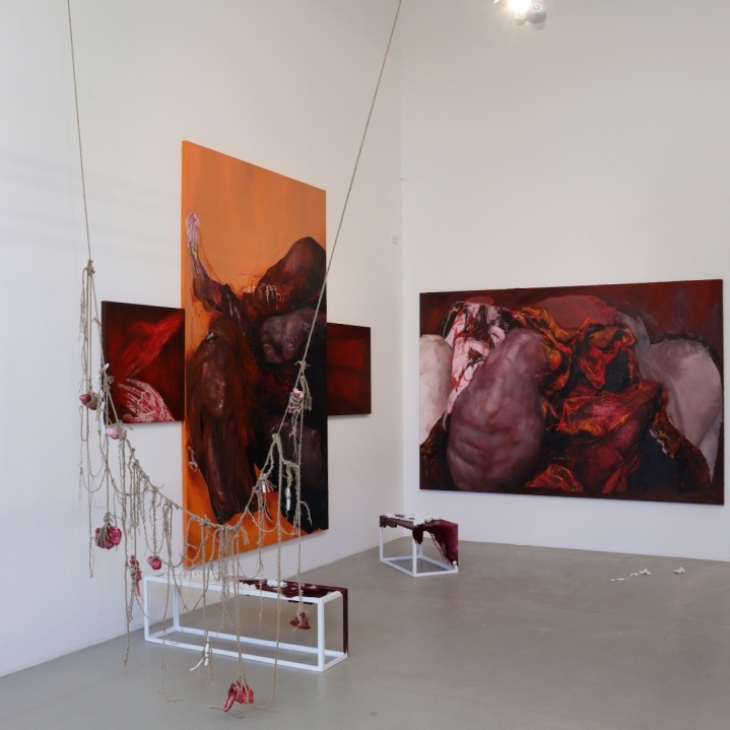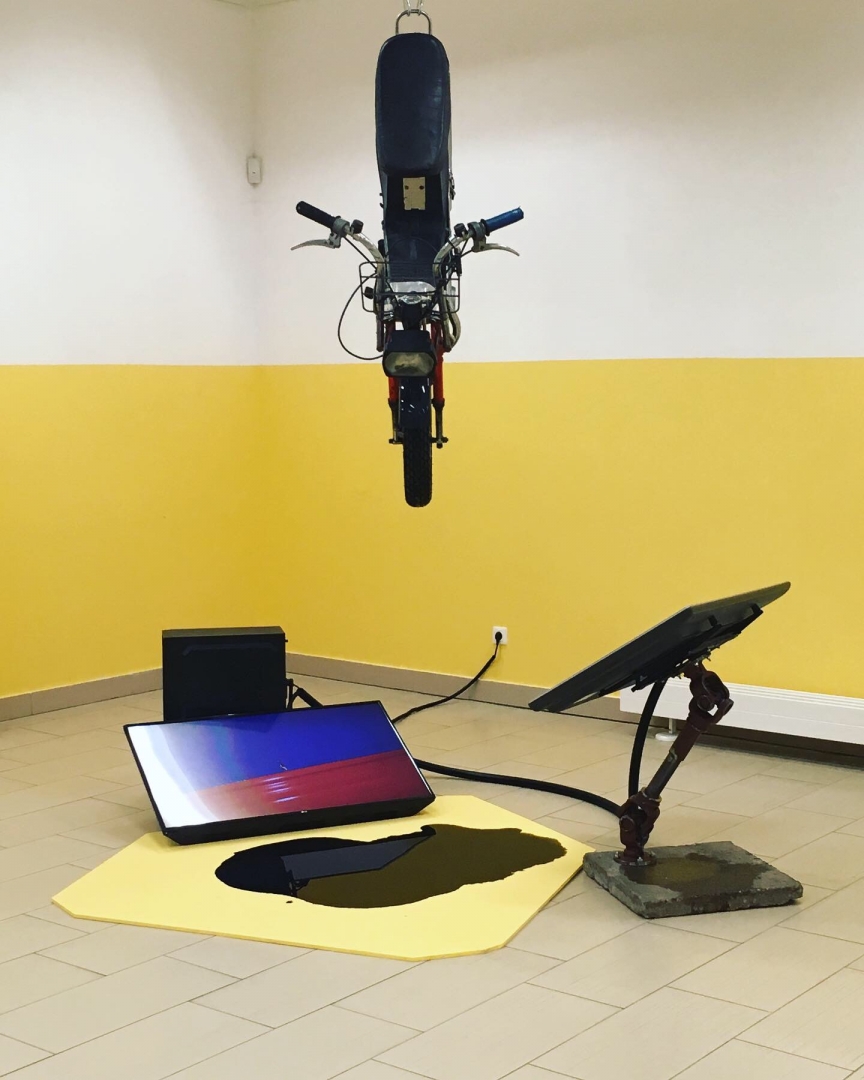What the other I want, 2019
In author’s life he has been fascinated by technology, ever since his grandpa put him in the tractor’s cabin to drive it through the fields of hay. Even today, he can still feel that summer heat coming through the windows inside the small cabin, where the smell of metal gear, engine oil, and leather seats was sticking to his skin. More importantly, he remembers the emotion he felt – having that power of control, and the force that the tractor could create in the form of bursting loud sounds and the wheels turning. He still feels how the whole cabin, together with every part of his body, was shaking in the rhythm of engine pistons moving up and down. With his fragile little body, he was able to embody this technology and extend himself, to have that power in his hands, to feel the road, the speed and to see the world through the tractor’s front glass frame. As he grew up, his fascination with technology grew with him. He started to use different tools to build things such as toy submarines, guns, electric toy cars or even tree houses and boats. He could not hold back the joy when he got his motorbike, which he could experience more speed, another form of power, and most importantly, a new and never-before-felt experience. Nothing made him happier than the ability to use these tools created by humankind to make something unique and to try out that new thing himself; to extend his bodily experiences. Today humankind is able to modify their bodies, to live longer and healthier lives and thus allows the human body to further evolve through the help of technology. It extends human minds and the limited abilities of the human body and in doing so, redefines and extends what it means to be human. In the digital world, people can create new identities. Those identities, in turn, have an enormous impact on their non-digital counterparts’ lives — thus making people’s online identities into an extension of themselves, and a kind of virtual being. The emergence of tools such as virtual reality, computer generated imagery, and both of them enveloped in artificial intelligence, has further enabled human extension into virtual environments. In a way, this has created a new ecosystem- digital and nondigital living in conjunction as a system in the modern world. As emerging technologies are occupying more space in people lives, becoming more humanlike and realistic, it is essential to examine the embodiment relation they bring. It is important today as these technologies have a growing impact onto our society as it occupies more time in our lives. Furthermore technology has the ability to inherit the world views of its creators. The emerging technologies pose dangers and a greater impact on the society than intended, by reinforcing the biased moral values of its creators and, therefore, strengthen gender standards. With his work, he tells a personal story of how technologies were forced on him since his childhood till today, which is a result, formed my masculine identity. Things such as his motorbike, garage where he has spent most of his boyhood, tractor and the rest of the “manly” tools. He believes technology is never gender neutral. Often ideologies of gender are hidden within the technology embodying its creators’ worldview and is difficult to grasp by critical eye, yet silently reinforcing or imposing themselves upon society. In his final work, he hangs his motorbike like a slaughtered animal, letting its blood to leak away. His digital clone cries and throws up with engine oil, which is the masculinity that he was pumped up through his childhood, while the headless body is looking for its head. At the same time, his digital clone is learning how to climb up the red carpet stairs, but rather is only falling. Where it is all connected with engine oil leaking from the motorbike, which immediately becomes a reflection of everything within the space. It is important to note that in this installation, digital bodies are given artificial intelligence, which are learning, have memory, and are making unique decisions with each step. In one screen digital entity is learning to find its head and in the other one, learning to climb the stairs. This way, simulation is developing in real time, ever-changing, and never the same.









